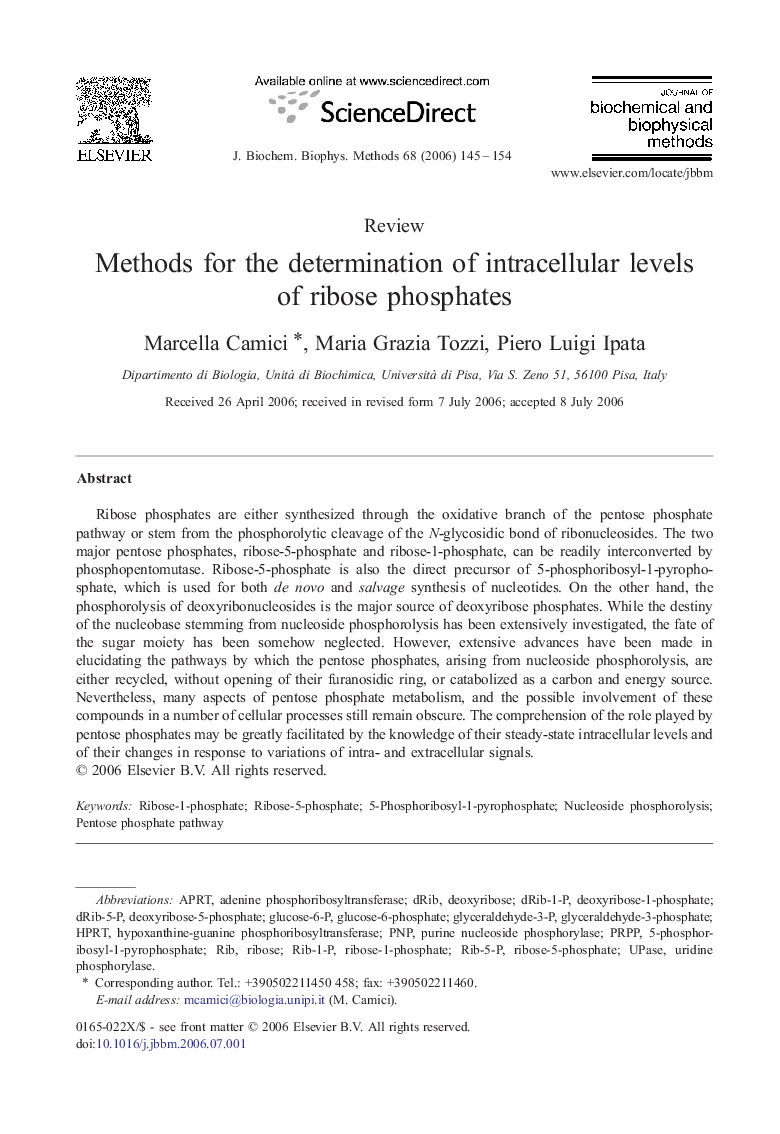| Article ID | Journal | Published Year | Pages | File Type |
|---|---|---|---|---|
| 1988584 | Journal of Biochemical and Biophysical Methods | 2006 | 10 Pages |
Ribose phosphates are either synthesized through the oxidative branch of the pentose phosphate pathway or stem from the phosphorolytic cleavage of the N-glycosidic bond of ribonucleosides. The two major pentose phosphates, ribose-5-phosphate and ribose-1-phosphate, can be readily interconverted by phosphopentomutase. Ribose-5-phosphate is also the direct precursor of 5-phosphoribosyl-1-pyrophosphate, which is used for both de novo and salvage synthesis of nucleotides. On the other hand, the phosphorolysis of deoxyribonucleosides is the major source of deoxyribose phosphates. While the destiny of the nucleobase stemming from nucleoside phosphorolysis has been extensively investigated, the fate of the sugar moiety has been somehow neglected. However, extensive advances have been made in elucidating the pathways by which the pentose phosphates, arising from nucleoside phosphorolysis, are either recycled, without opening of their furanosidic ring, or catabolized as a carbon and energy source. Nevertheless, many aspects of pentose phosphate metabolism, and the possible involvement of these compounds in a number of cellular processes still remain obscure. The comprehension of the role played by pentose phosphates may be greatly facilitated by the knowledge of their steady-state intracellular levels and of their changes in response to variations of intra- and extracellular signals.
